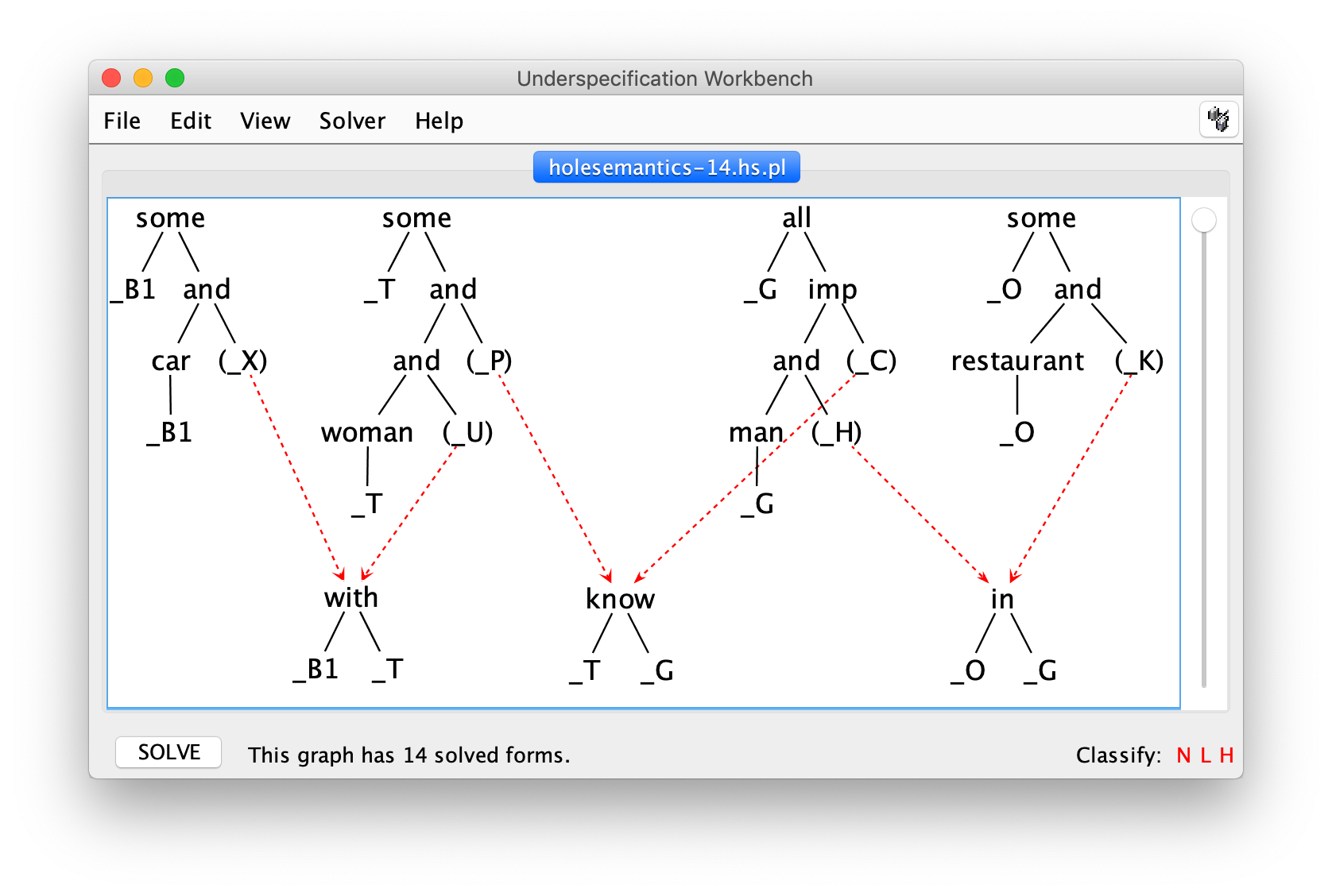Utool is the Swiss Army Knife of Underspecification. It is a GUI and library written in Java for performing computations with dominance graphs and other formalisms, which are used to represent semantic ambiguities in natural language processing.
You can find detailed documentation on the Utool homepage.
Utool was developed in 2005-2010 in the CHORUS Project at Saarland University. It is no longer under active development, but it is probably still the fastest solver for underspecified representations of scope ambiguities, and will still run fine today. If you have any questions or requests, please get in touch with Alexander Koller.
You can always download the most recent release of Utool from the Releases page.
To compile Utool, you will need a recent version of Apache Maven and Java JDK 8 or newer. Utool 3.3 has been tested in 2020 with Java 8 and 12.
Clone Utool from Github and the compile as follows:
mvn install assembly:single
This will produce a file target/utool-<version>-jar-with-dependencies.jar, where <version> is the version of Utool. We will call this file utool.jar below for simplicity.
Run Utool as follows to get some elementary help on command-line usage:
java -jar utool.jar
You can open the GUI shown above as follows:
java -jar target/utool.jar display
If you use Utool in your research, you can cite it as follows:
@inproceedings{koller-thater-2005-evolution,
title = "The Evolution of Dominance Constraint Solvers",
author = "Koller, Alexander and Thater, Stefan",
booktitle = "Proceedings of Workshop on Software",
year = "2005",
address = "Ann Arbor, Michigan",
url = "https://aclanthology.org/W05-1105",
pages = "65--76",
}
Our own most recent publication that uses Utool is this one. You can cite it if you are computing weakest readings or performing redundancy elimination with Utool.
@inproceedings{koller-thater-2010-computing,
title = "Computing Weakest Readings",
author = "Koller, Alexander and Thater, Stefan",
booktitle = "Proceedings of the 48th Annual Meeting of the Association for Computational Linguistics",
year = "2010",
address = "Uppsala, Sweden",
url = "https://aclanthology.org/P10-1004",
pages = "30--39",
}

